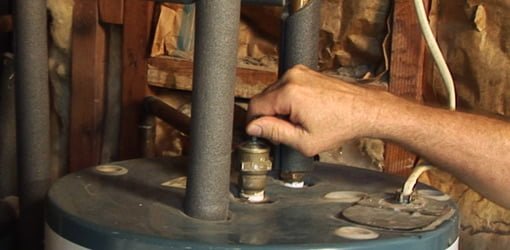If your toilet handle sticks in the downward position after flushing, the problem is usually a worn or broken internal tab inside the handle mechanism. When that tab fails, the handle can’t spring back up — and your toilet may keep running until you manually reset it.
The fix is simple and inexpensive. In most cases, you just need to replace the toilet handle, which usually costs $10–$30 for parts and $75–$150 total if you hire a plumber. Most homeowners can handle this repair themselves in under 30 minutes with basic tools. If you can’t find an exact replacement, you may need to swap out the entire handle assembly — which is still a budget-friendly repair.
In this guide, we’ll walk you through exactly how to replace a toilet handle, when it’s worth replacing the full mechanism, and how to avoid common mistakes that lead to repeated problems.
How To Fix a Toilet Handle That Stays Down
If your toilet handle sticks in the down position and your toilet keeps running, it’s usually because the internal stop tab has worn out or snapped off. We’ll walk you through how to replace the handle step by step — no special tools or plumbing experience needed.
Remove the Tank Lid
Carefully lift the ceramic lid off the toilet tank and set it aside on a soft towel or bathmat to prevent cracks. You’ll need full access to the internal components inside the tank to do the repair.
Unhook the Chain From the Handle Arm
Look inside the tank and find the metal or plastic arm connected to the handle. You’ll see a small chain linking the arm to the rubber flapper at the bottom. Unhook the chain from the arm and let it hang loose — no need to detach it from the flapper.
Unscrew the Mounting Nut Inside the Tank
At the base of the handle, inside the tank, you’ll see a plastic or metal nut holding it in place. It’s important to note this nut is threaded in reverse — turn it clockwise to loosen it. A small adjustable wrench can help if it’s tight, but be gentle to avoid cracking the porcelain.
Pull Out the Old Handle
Once the nut is off, simply pull the handle and attached arm straight out through the front of the tank. If it feels stuck, give it a slight wiggle — sometimes, mineral deposits or old corrosion can make it stick.
Install the New Handle
Slide the new handle into the hole from the outside of the tank. From the inside, thread the nut back onto the handle and tighten it by turning it counterclockwise (since it’s reverse-threaded). Make sure the handle is snug but don’t overtighten — too much pressure can damage the tank.
Reattach the Chain
Hook the chain onto one of the holes in the new handle arm. You want just a little slack in the chain when the flapper is down. If the chain is too tight, the flapper won’t close; if it’s too loose, the flush might not trigger at all.
Test the Handle
Flush the toilet a few times and watch how the handle and flapper move. The handle should return to the upright position on its own, and the tank should refill without running continuously. If anything feels off, adjust the chain length or reposition it on the arm.
Replace the Tank Lid
Once everything’s working smoothly, gently place the lid back on the tank. Make sure it sits flat and doesn’t rock — and you’re done.
If your new handle still feels loose or sticks, the issue might be the entire handle assembly inside the tank. In that case, it’s worth replacing the full mechanism — a universal kit runs around $15–$20 and takes only a few extra minutes to install.
Final Thoughts
A stuck toilet handle is a common issue that’s usually easy and inexpensive to fix. In most cases, replacing the handle takes less than 30 minutes and costs under $30 in parts — far cheaper than calling a plumber for a simple repair.
Just remember: If the new handle doesn’t solve the problem, the entire flush mechanism may be worn out. Swapping it with a universal replacement is still a quick, budget-friendly fix any homeowner can tackle with basic tools.






